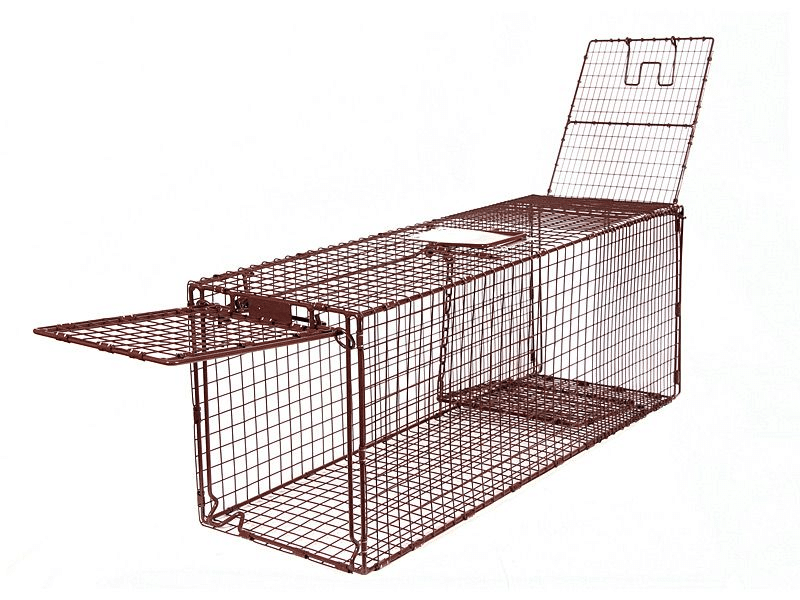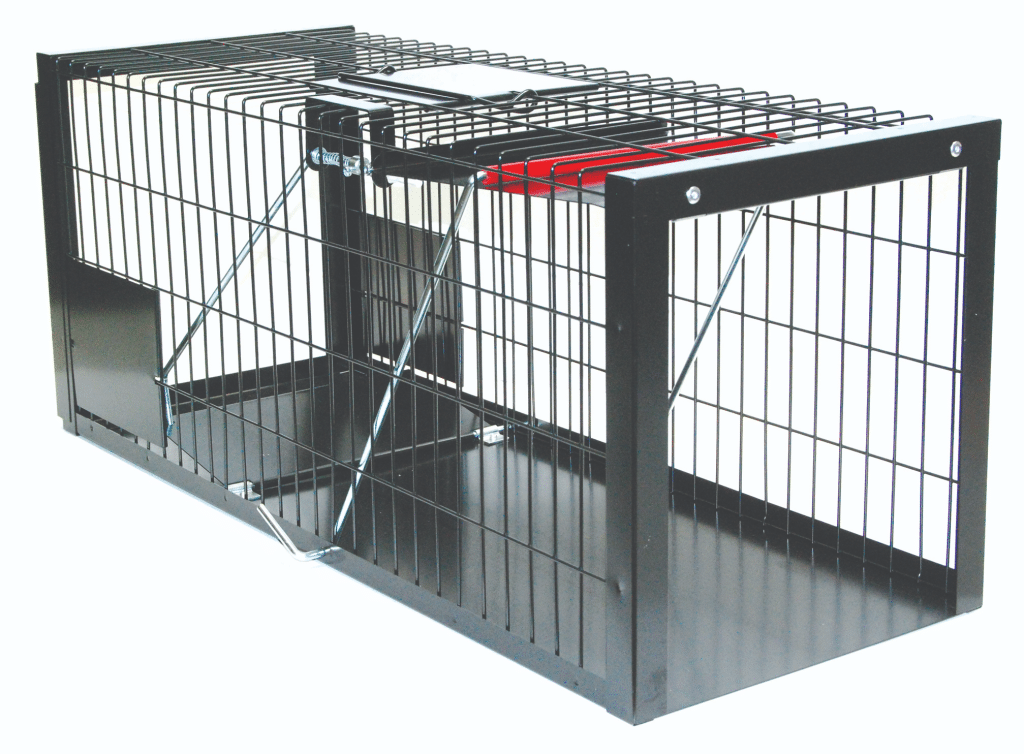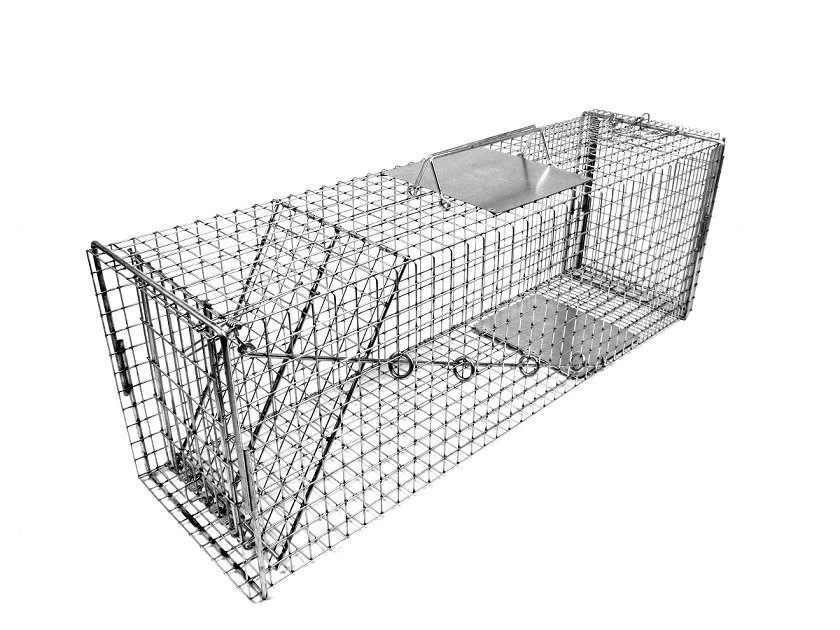As a pet owner or rescuer, you know the effort it takes to venture out into the deep woods to bring home a stray or feral cat. Catching a feral or stray cat is challenging; this is a known fact. However, once you consider the different considerations in trapping a wild cat, you can successfully capture and tame one!
There are many different types of cat traps available today. They vary in size, material and price. Albeit some are costly, the key is finding a humane trap you may use to catch a feral, stray, or homeless cat.
This article discusses trapping and the best cat traps you can use!
Let’s get started!
First and Foremost, What is Trap-Neuter-Return (TNR)?
It is imperative to treat wild or disadvantaged cats fairly and justly when capturing them.
The trap-neuter-return program (TNC) is a humane and effective method of managing the populations of community cats. As a result of this project, community cats are better-taken care of. Feral animals have a better chance of living a decent life in the future, and all communities benefit from it. Anybody can perform TNR if they have the right equipment and knowledge!
What to Do When Trapping Feral Or Stray Cats
Trapping feral cats requires precarious fieldwork. You must consider where your traps will be set up and the effectiveness of each trap.
To catch felines, consider some of the tips listed below. Using these techniques, you’ll be able to catch even the most street-smart ones!
- You can identify the cat’s most comfortable eating and sleeping areas if you observe them for a week or two. You should set up traps as close to these spots as possible to have the best chance of attracting feral cats. Other than that, it is best to put them in a secluded area away from people.
- Do not underestimate the fear street cats may have in enclosed spaces. To make your trip less threatening, choose a giant trap. Assemble a dark hiding spot for the trap by covering the top and sides of the trap with blankets or towels. Make sure the entrance is not covered at any time.
- Try to camouflage the trap with leaves, twigs, and small branches in the wild, if it appears too conspicuous. To blend the cage in as much as possible, you should cover the entire cage and the trap floor to make it look natural. Be sure to test the trap door before you do any work to ensure that it will allow the trap door’s closure.
- Food can be used to lure a cat into a trap, making it very easy for you to catch the cat. You should first keep the food at the cage entrance for a few days before placing it inside. After the cat has become comfortable with this setup, you can gradually move the food into the trap daily until it is used to it. When your usual food does not work, try tinned salmon, mackerel, chicken, or even baby food in a jar.
- Cats tend to pick up things fairly quickly and can easily navigate their way around trigger plates. Depending on the situation, you may want to cover it with a blanket, towels or a newspaper if that is the case.
- Luring a mother cat into a trap is possible by using kittens. Taking this approach, however, will only be effective if you have been able to capture the kittens first. Ensure that they are placed in a separate carrier behind the box trap. If you want to create a dark tunnel around the trap, you can cover it with towels or blankets. When the mother sees her kittens in the trap, she will ensure they are safe by going in to get them.
- You can use mobile phones to trap kittens and mother cats. You will need to find a video clip with meowing kittens, then place your phone behind the trap facing them. As a result, this method will attract kittens who are alone or scared, as well as mothers who think it is a call from their babies.
- There is nothing wrong with driving or getting a friend to drive you to and from the site, even if the animal you would like to trap is only a few blocks away. This will limit the distance the trap will have to be carried. As far as all parties are concerned, this is the least stressful and safest decision.
Unlike domestic cats, feral cats have never been socialised. Strays, on the other hand, may seem a bit friendlier, but they still may panic if they are caught. You may get scratched or bitten if you attempt to catch them this way, or the cat might get injured if it tries to escape.
Additionally, you should never use anything else but a box trap or a drop trap to catch a cat. Cats can be caught safely, humanely, and acceptably using these traps. A cat can be seriously injured or killed by any other method, and you could be in serious trouble.
The Best Humane Traps for Cats
Tru Catch Classic Deluxe Animal Trap 36D

Undoubtedly, the Tru Catch 36D cat trap is one of the leading cat traps on the market. The design of this machine is unique in that it features a quiet gravity door, an extra-large trip plate, and a variable trigger.
Cats are more likely to enter this trap due to its large entrance and large trip plate, which increases the chances of the wild cat being caught. If the trip plate is small, the cat may be able to eat the bait and not set off the trap if it eats the bait.
Depending on the cat’s weight, cats can be set for a light or a heavy trigger mechanism. In addition to making adding bait easy, the sliding rear door allows wildlife to be released quickly due to its ease. It is possible to release wildlife from the front door as well; you can roll the trap upside down with your foot, and the front door will automatically open. This is indeed a must-buy!
EeziSet Cat Trap

The EeziSet is an automatic trap designed to catch a single cat by self-activating with a small button. It comprises a heavy gauge black wire mesh with a solid metal floor and is powder coated to ensure that it will last for a long time. This cat trap has an established mechanism consisting of a spring-loaded, self-latching trap door that is released by the cat’s weight on a solid treadle plate which is connected. In terms of design, the entire trap is simple, robust, and can be used reliably.
Toms of all ages can quickly get into the cage as the trap opening is wide and the cage is spacious. Discomfort and distress are minimised.
Additionally, metal plates placed throughout the cage prevent the bait from being accessed from the outside. To ease the natural suspicion of the approaching cat, the bait door may be helpful. A polyglass door replacement kit is available for the EeziSet in addition to the standard and extended models.
Tomahawk Neighborhood Cat Trap (Tomahawk TNR Model 608NC)

Among the many traps offered by Tomahawk and Safeguard, some are of good quality in various sizes and styles. It should be noted, however, that the Tomahawk Neighborhood Cat Trap has a few features that set it apart from the competition.
The Neighborhood Cats Organization (a non-profit organisation dedicated to trapping, neutering, and returning feral cats) designed this trap to maximise the efficiency of capturing cats. Taking into account that the trap is extra-long (36″), it is more likely that your cat will go into the trap with his entire body in it before stepping on the trip plate.
You will likely catch your cat if you do this. With the smaller, more traditional trip plates, a trap-savvy cat can easily step over on them, eat all the bait, and then escape the trap without getting caught. The large trip plate this trap has set it apart from similar traps, as it encourages the cat to step on the plate while trying to get the bait!
After Successfully Trapping a Cat
As soon as you have successfully trapped the cat, you should devise a plan for how to proceed. Once the cat has entered the trap, cover it quickly with a towel, blanket, or sheet so that it does not get cold or hot, depending on the weather. Keeping trapped animals covered helps them calm down faster. You should ensure they have enough room to breathe freely, however.
In addition, it is critical to ensure that you arrange for your vet or a local rescue centre to check your cats for any illnesses beforehand. This includes vaccinating and neutering them before you bring them home. It is also imperative to know what to do with them once they are ready to return to their neighbourhood after being rehabilitated. On the same day male cats recover from anaesthesia, they can be neutered and released. In some cases, female animals may require a little more time at the vet or animal shelter. However, above all else, you should ensure a feeding station and a shelter for the cats to maintain their health.
There might be a time when it is impossible to take the cat directly to a veterinarian or an animal shelter, so you should put the cat in an open carrier with a litter pan, food, and water. Unsocialised cats should never be set free in the house; you might not see them for days, and you might not be able to trap them again when you want to take them to a vet or an animal shelter if you don’t know what to do with them.
Conclusion

That’s it! In most cases, catching feral kittens and shy, homeless pet cats isn’t the most convenient thing in the world. However, it can be the most effective manner to gather, alter, or rehome them. You can choose from a variety of humane traps that are available on the market today. One of the keys to a successful mission is choosing the right trap for the situation you are dealing with.
For more cat tips and reviews, visit Cat Judo. For inquiries, feel free to reach out!
Frequently Asked Questions
How do I know the difference between a stray cat and a feral cat?
There’s a huge difference between feral and stray cats. Feral cats are essentially wild cats that have lived in the woods and stayed away from human contact.
While stray cats are pets that have been abandoned or lost by their owners.
Stray cats are easier to secure and interact with than feral cats. In most cases, you can lure an abandoned or lost cat into a carrier by using food as a trap.
Is it okay to pet free-roaming cats?
Most free-roaming cats have not been vaccinated against deadly diseases. Touching a free-roaming cat puts you and your pets at risk of diseases like rabies and bacterial infections.
It is best to avoid picking up a free-roaming cat altogether, even when rescuing them. Call the professionals, if you cannot secure them with a trap.
How long does it take for a stray cat to trust you?
The time it will take to gain a stray cat’s trust depends entirely on the cat. A stray cat may immediately approach you if they’re already used to people and aren’t scared. Stray cats that are injured or afraid of people may take a month (or even longer) to trust you.
